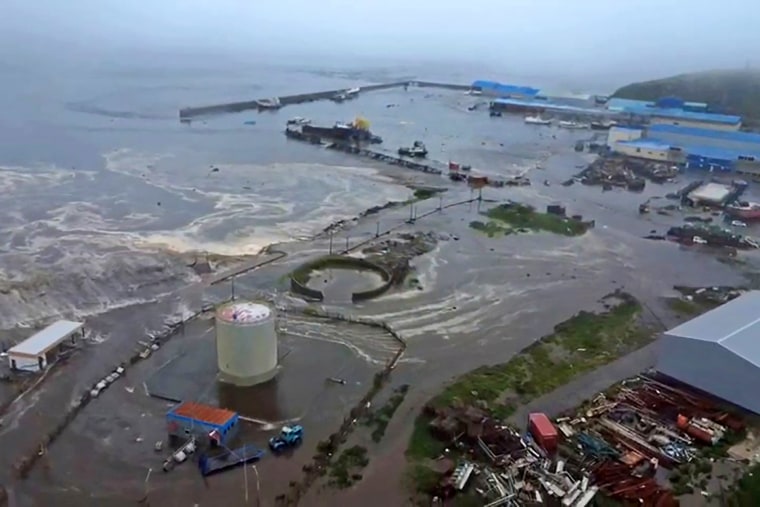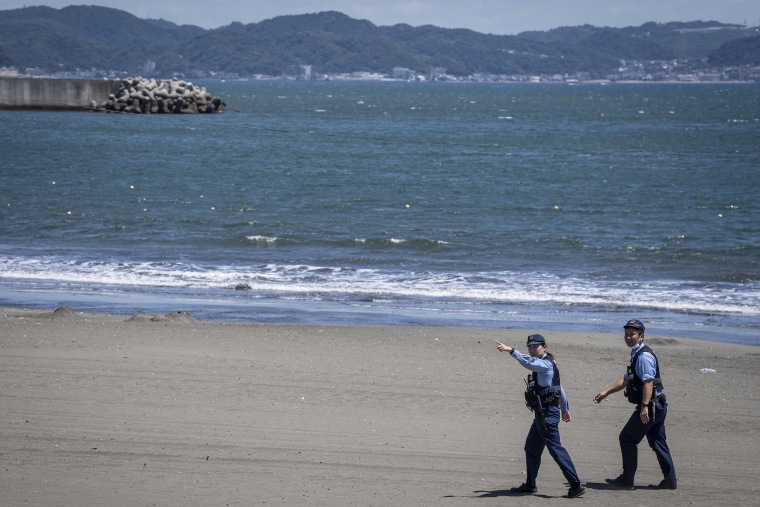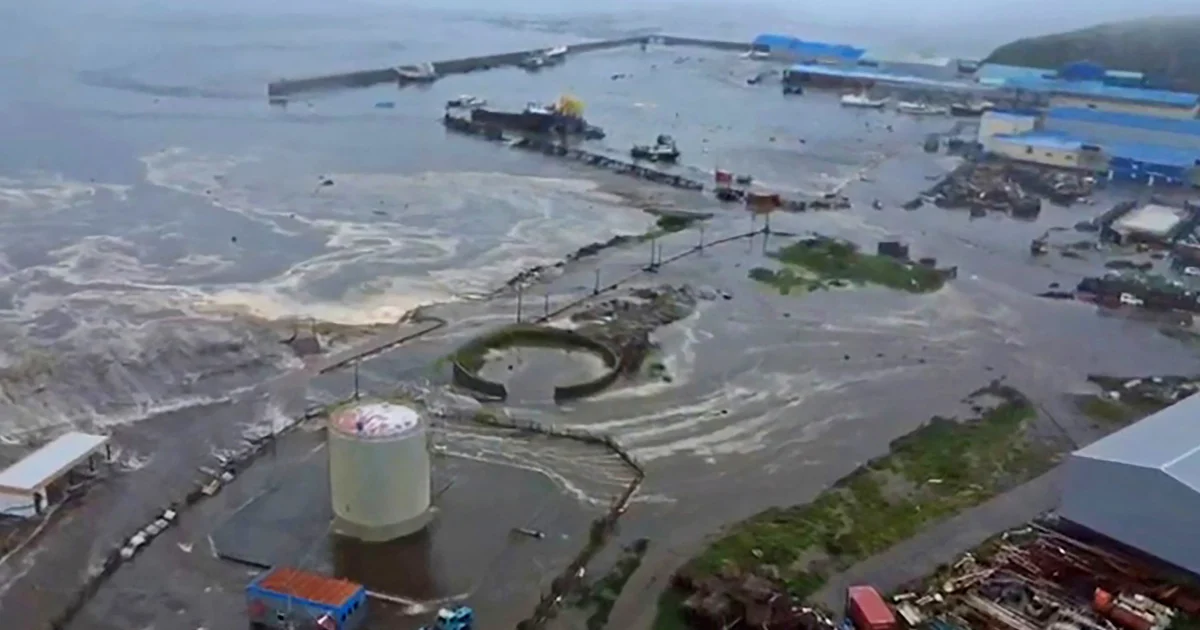The earthquake that struck Russia’s eastern Kamchatka region and triggered tsunami warnings across the Pacific is among the most powerful temblors to have been recorded in modern history.
The U.S. Geological Survey (USGS) may revise the magnitude of the earthquake, but if it remains at 8.8, this quake would be tied with the sixth strongest ever, which struck central Chile in 2010, killing more than 500 people and destroying over 370,000 homes.
Russian authorities have called the latest quake a “remarkable event.”
It struck at a depth of an estimated 13 miles, about 74 miles off the coast of Petropavlovsk-Kamchatsky, the regional capital on the Kamchatka Peninsula, with a population of 180,000.
Despite its strength, early reports indicate that there have been no deaths or significant damage from the event and that recorded tsunami waves reached a maximum of 9.8 to 13.1 feet in Russia, 4.9 feet in Japan and 5.7 feet in Hawaii.

Tsunami-hit Severo-Kurilsk, on Paramushir island in Russia’s northern Kuril Islands.Geophysical Service of the Russian Academy of Sciences / AFP via Getty Images
David Tappin, a principal researcher at the British Geological Survey, said he’s surprised by this.
“When I first saw it was 8.8, I must admit, I thought, ‘Oh, we’re going back to maybe Japan,’” he said, referring to the 2011 earthquake that triggered a huge tsunami, killing more than 20,000 people and causing a meltdown at the Fukushima Daiichi nuclear power plant.
Now referred to as the “Great Tohoku Earthquake,” it had a magnitude of 9.1, the fourth most powerful ever recorded. The waves from that tsunami reached as high as 130 feet, according to the National Oceanic and Atmospheric Administration, hitting the coast at a height of about 50 feet.
“At the present time, it seems quite anomalous. 8.8 magnitude generating a 4-meter tsunami seems very unusual but … the information on the tsunami impact is still quite limited,” Tappin said, adding that he would have expected a tsunami of at least 10 meters, or about 33 feet.
He said the relatively insignificant damage reported so far could be due to the remoteness of the epicenter and the effectiveness of the warning systems.
“It seems to me that the warning system kicked in, and warnings were given in Japan initially, Hawaii and off the West Coast of the U.S. So it just demonstrates the importance of having these warning systems,” Tappin said. “In this instance, perhaps the tsunami wasn’t large, but it saves people’s lives.”
The fifth-strongest earthquake ever recorded, a 9.0 tremor, also hit the Kamchatka region in 1952. Its epicenter was less than 19 miles from this one. In that disaster, the waves reached up to 50 feet and killed at least 1,790 people, with some historians putting the death toll as high as 8,000, according to the Russian Military Historical Society.

A beach evacuated due to a tsunami warning in Fujisawa city, Japan, on Wednesday.Yuichi Yamazaki / AFP via Getty Images
The region has experienced nearly 700 earthquakes with magnitudes over 5.0 since 1990, according to the USGS.
The most powerful earthquake ever recorded was the magnitude-9.5 “Valdivia” or “Great Chilean” earthquake, which hit central Chile in 1960, killing more than 1,600 people and leaving 2 million homeless.
One of the world’s most deadly earthquakes was the third most powerful ever recorded, which struck off the coast of Sumatra, Indonesia, on Boxing Day in 2004. The 9.1-magnitude quake triggered massive tsunamis reaching up to 100 feet and killed an estimated 280,000 people.
Jackson Peck
